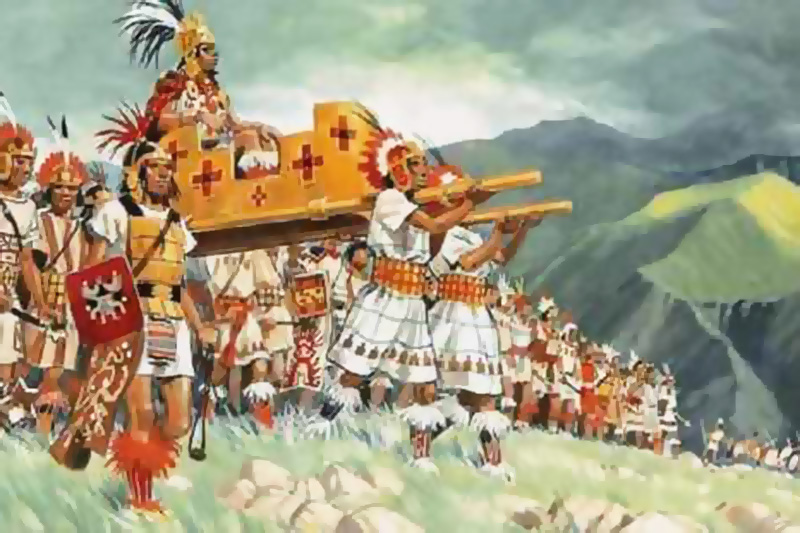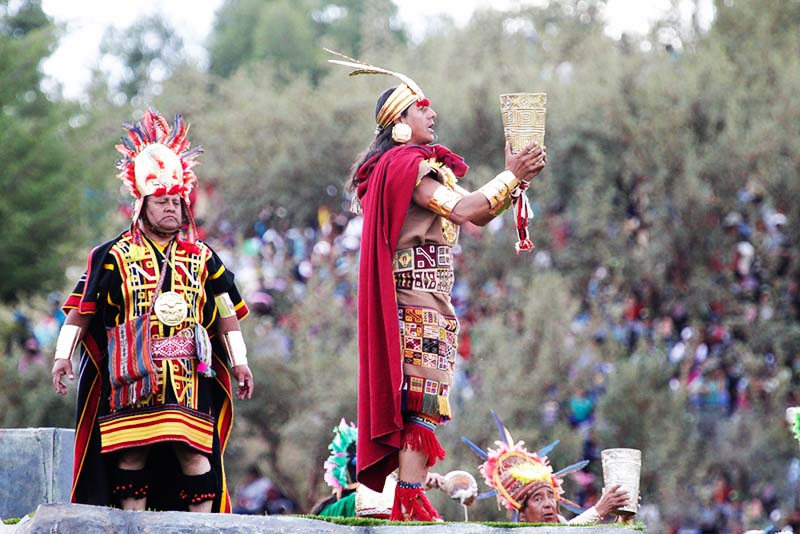The Incas and their deities in wars
The Incas used totally opposite ways to expand and conquer new territories, one that leads to consensus or dialogue between the sovereign of the Incas with the leader of the tribes or ethnic groups and the other of violence. The dialogue implied a peaceful assimilation, but if they resisted or sought to fight, the wars were bloody and totally fierce. Let’s learn more about the art of conquest of the Incas.

Inca Warriors
Cusi Yupanqui (Cusco, 1400 to 1471 AD approx.), renowned as Pachacútec Inca Yupanqui Cápac Intichuri or the sovereign in charge to generate change on earth, for its translation into Spanish. He was the one who consolidated the foundations of the Inca culture so that it later became a vast empire. He was in charge of the defense of Cusco and the victory against the Chancas, thus marking the beginning of a new era for the Incas.
War as an end
In the decade that began in 1430, the Incas were only a culture that was beginning to consolidate and making some constructions that would form what would be known as the capital of Tawantinsuyo. The explorations and conquests that they carried out until then, for the most part, were only to small tribes or ethnic groups to whom they demonstrated superiority and were assimilated without violence. During this expansionist process they came across a culture with a lot of conquered land and that, like the Incas, were looking to expand, they were the Chancas. In this confrontation, dialogues were not worth it. This war would mark the beginning of violent conquests by the Incas and therefore there were more immediate conquests.
After the war of the Incas against Chancas, and the victory by part of the Incas, they began to use more intimidation and violence for their next wars and conquests. However, they are held in considerable emphasis by the chroniclers, who always learned and assimilated what they considered important from the tribes they conquered. Although a part of the story is handled that the rancor against the Chancas was so great that they tried to eliminate all their gods and their cultural tradition.
How did the Incas proceed in war?
As we just mentioned, war was the last resort used by the Incas to conquer a new ethnic group or tribe. Before that, during the years 1000 to 1400 they managed to attract different ethnic groups, through dialogue and always understanding the importance of the curacas or leaders of these groups and also their religious beliefs. After the victory with the Chancas, they began aggressive campaigns that allowed them to achieve great expansion in a short time.
The aggressive campaigns began, according to the chronicler Cieza de León, after the rejection of the kinship proposal, that is, negotiations were started in which the Inca would take as his wife one of the daughters of the chief of the tribe or ethnic group that they wanted to assimilate. If the curaca accepted this request, an elite relationship was established and in some cases the conditions of the town were improved; for example, the Incas sent their architects to improve constructions, build roads and tambos with a sophisticated urban design. The population was also allowed to continue manifesting their cult, but in some cases exclusive temples were built to the deities of the Incas. When all this protocol ended, it was understood that the assimilated population, it would be a source of labor in the service of the ruling Inca. While the sons and daughters of the elites were transported to Cusco for their education and also to avoid any attempted uprising. Once they finished their education, they were sent to continue with the functions of their parents.
In case the dialogue did not work, cruelty and bloody battles began. Cruelty was a clear symbol of superiority so that other peoples do not think of opposing the interests of the Inca. Within these wars they did not destroy infrastructure since it was later used by them. Eduardo Torres mentions that the Inca expansions always tried to be “civilized” or, failing that, trying not to use violence, but if this did not work, the cruelty used was total and without mercy.
How did the gods participate during the wars?

Rituals to the gods of the Incas
According to some chroniclers and studies, the participation of the gods was essential to undertake any war campaign. The gods or deities for the Incas were called Huacas, many studies indicate that while bloody wars were being fought, at the same time a war between huacas belonging to different sides was originating.
To start the battles, they entrusted themselves to deities such as the Sun and Thunder, in the case of the Incas. By doing the corresponding rituals they came out confident and with the courage to the fullest to wage their wars. An important activity for this was the sacrifice of animals as an offering to the gods. With the offerings given, they gave their own huacas greater power and therefore weakened the opposing ones.
It is understood that Huayna Cápac, during his expansionist campaigns, always carried representations of the Sun (Inti) and Thunder (Illapa), according to some chroniclers, while he carried these two figures he achieved the conquest without problems from Tomebamba and Cayambis, two places located north of present-day Peru, precisely in Ecuador.
Another important deity is the one referred to as The Stone of War, these were large stones that were found near the main squares. They were stones that were decorated with large pieces of gold and some carved in the same stone and settings of wood or precious stones. The stones had different allusions to deities. Some chroniclers’ compilations mention that the warriors performed some rituals in front of these stones before battling. An example of this is when the defense of Cusco by the Inca soldiers is narrated, where the person in charge of the ceremony, probably a priest, put animal skins which they had to imitate in fierceness during battles. This served to generate a connection with divinity and the representations that animals had.
These stones were part of a series of representations of the gods and points to worship of the Incas. That is to say, they were part of the “Usno”, in other words, it was a fundamental piece for all the rituals. Returning to the significance of the stone of war, in the rituals and campaigns of great importance, the Inca designated the generals in front of this deity, entrusting them with the course of the battle. At the beginning of the ceremony, chicha was given to the stone, according to Pedro Pizarro, abundantly. This liquid slid down the stone until it descended into underground channels and was absorbed into the earth. The deities were always fundamental, especially to generate dominance over the population or the masses. The continuity of exercising power through the symbolic occurred in many cultures around the world and persists today, except that the representations are different.
By Ticket Machu Picchu – Last updated, August 15, 2024